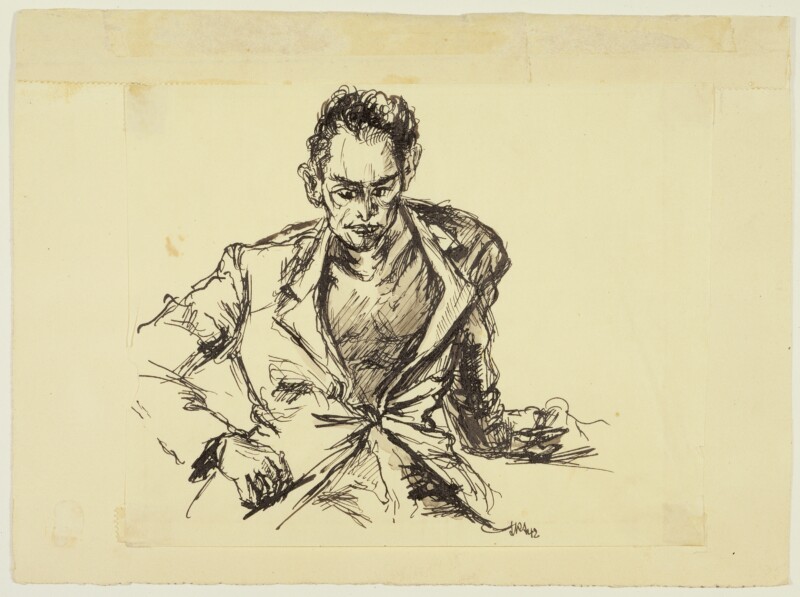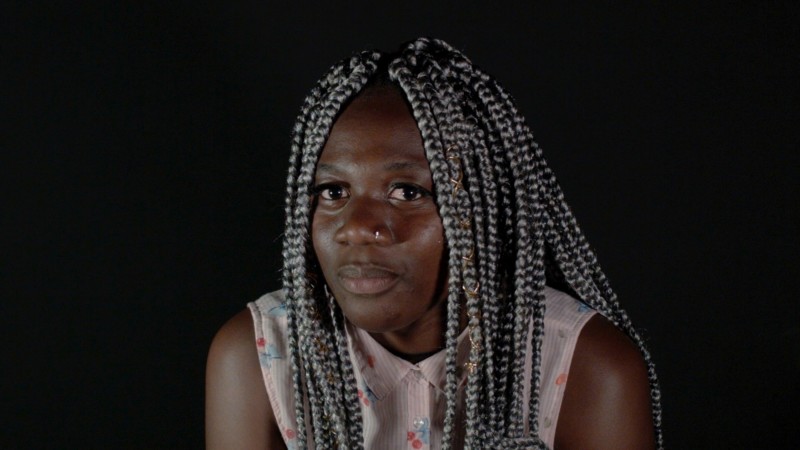“Nous parlions espagnol à la maison et dans le quartier qui était habité majoritairement par des Espagnols (originaires surtout d’Estrémadure et de la région de Zamora). Les commerçants français apprenaient l’espagnol pour pouvoir satisfaire leurs clients. Il y avait aussi quelques commerçants espagnols comme la Teofila et la Tuerta. Notre mère parlait mal le français mais elle nous comprenait quand nous le parlions. Notre père parlait et comprenait mieux. Nous l’aidions à lire et à écrire en français et en espagnol, notamment des brochures sur la guerre civile. Nous avons appris le français à l’école sans nous en rendre compte. Nous avions des amies françaises à l’école et au 10 rue du Landy. Entre nous nous parlions en français à l’école et en colonies de vacances. Nous parlons toujours français entre nous. Vers l’âge de 8-9 ans, nous allions suivre des cours, les mercredis soirs à Aubervilliers, pour apprendre à lire et à écrire en Espagnol. Il y avait une bibliothèque et nous empruntions des livres en espagnol. Cela s’est achevé en 1936 car les professeurs sont partis se battre pour la République.”
“We spoke Spanish at home and in the neighborhood, which was mainly inhabited by Spaniards (mainly from Extremadura and the Zamora region). The French dealers learned Spanish to be able to satisfy their customers. There were also some Spanish dealers like Teofila and Tuerta. Our mother spoke French badly, but she understood us when we spoke French. Our father spoke and understood better. We helped him to read and write in French and Spanish, especially notebooks about the Civil War. We learned French at school without being aware of it. We had French friends at school and at 10 rue du Landy, and we spoke French to each other at school and in summer camps. We still speak French to each other. When we were about 8-9 years old, we went to classes in Aubervilliers on Wednesday evenings to learn to read and write in Spanish. There was a library and we borrowed books in Spanish. This ended in 1936, because the teachers left to fight for the Republic.”
In the first half of the 20th century, the so-called “Little Spain” emerged in the Parisian suburb of La Plaine Saint-Denis. In 1931, Spaniards made up the largest migrant community in La Plaine Saint-Denis with 4.5 percent of the total population. Various Spanish migrants had settled in Saint-Denis, Saint-Ouen and Aubervilliers in the course of three distinct migratory movements. So-called “economic migrants” shaped the decade of the 1920s. After the uprising in Asturias was crushed at the end of 1934, political refugees in particular began to arrive in the Parisian suburbs, and their number rose to about 1.5 million by 1950 after the defeat of the Republican camp in the Civil War in 1939. Another generation of Spanish “economic migrants” followed between 1955 and 1970.
The connection back to Spain remained intact for many even after their migration. For example, when the Civil War (1936-1939) raged in Spain, some ethnic Spanish men aged 18 to 46 left the Plaine Saint-Denis to return to Spain to fight in the Republican camp. Those who stayed in “Little Spain” organized support networks for communists or anarchists.
The reception experience for Spanish migrants differed according to the French migration regime. The latter in turn changed with the economic and political situation in France but exclusion and discrimination dominated the lives of many no matter when they arrived. For example, when, in early 1939, Spanish republican refugees from the Civil War exited for France, many of whom migrating to Paris and the surrounding areas, it became all too obvious that France had changed from a country of refugees to a country of forced transit. For although the French authorities had been very well prepared in the late 1930s to accept Spanish civil war refugees “humanely,” domestic, foreign policy and economic developments obviously spoke against this: immigration was to be severely restricted under the right-wing government of Édouard Daladier, making it more difficult for refugees to remain in France.
Extract from the interview with Raymonde, Marceline and Bonifacia Sanchez, conducted by Natacha Lillo, lecturer in Spanish civilization at the University of Paris-Diderot (Paris 7), on April 1, 1997; June 15, 1998; April 14, 1999; and September 20, 2000 in Saint-Denis .
Natacha Lillo, La Petite Espagne de la Plaine Saint-Denis (Paris: Autrement, 2004).
Translation into English © Minor Kontor.







